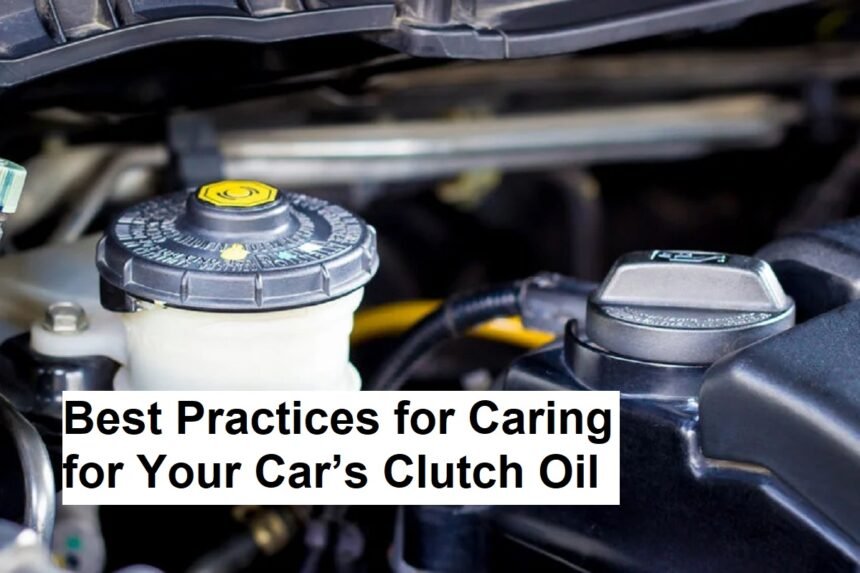Introduction
Maintaining the proper condition of your vehicle’s clutch system is essential for smooth operation and longevity. One of the key components of the clutch system is the hydraulic clutch oil (often referred to as clutch fluid). Just like engine oil, clutch oil requires regular care and maintenance to ensure optimal performance. Many drivers wonder about the best methods to care for and service clutch oil properly. This article will explore the best practices for clutch oil maintenance and how to keep your clutch system running smoothly.
Understanding Clutch Oil and Its Importance
The clutch system in most vehicles operates with a hydraulic mechanism. Clutch oil, or hydraulic fluid, transmits force from the clutch pedal to the release mechanism, enabling smooth engagement and disengagement of the clutch. Over time, this fluid can become contaminated, degrade, or leak, leading to issues like slipping, difficulty shifting gears, or clutch failure.
Proper maintenance of clutch oil ensures reliable clutch operation, prevents costly repairs, and extends the lifespan of the entire clutch system.
Best Methods for Clutch Oil Maintenance
1. Regular Inspection of the Clutch Fluid Level
The first step in clutch oil maintenance is frequent checking of the fluid level. Most vehicles have a designated reservoir, often labeled “Clutch Fluid” or “Master Cylinder” in the engine bay. Use the vehicle’s owner manual to locate and inspect the reservoir.
Best practice:
- Check the fluid level once a month.
- Ensure the fluid is within the “Min” and “Max” marks.
- Use the recommended type of clutch fluid specified by the manufacturer, usually DOT3 or DOT4 brake fluid.
Tip: If the fluid is low, inspect for leaks in the hydraulic system, including the master cylinder, slave cylinder, and hoses.
2. Regular Replacement of Clutch Fluid
Unlike engine oil, clutch fluid doesn’t need to be changed as frequently, but it should be replaced at regular intervals to prevent contamination and degradation. Typically, a brake or clutch fluid change is recommended every 2 to 3 years, but always follow your vehicle manufacturer’s schedule.
Best method:
- Drain the old fluid into an approved container.
- Refill with fresh, manufacturer-approved clutch fluid.
- Use a bleeding process to remove air from the hydraulic system, ensuring no air pockets remain.
Note: Bleeding the system is crucial because air bubbles can cause spongy pedal feel and decreased clutch efficiency.
3. Bleeding the Hydraulic System
Air in the hydraulic system is a common cause of clutch malfunction. To ensure the clutch operates smoothly, removing air through bleeding is essential.
Proper method:
- Use a clear tube to connect the bleed valve to a container.
- Open the bleed valve slightly and ask an assistant to press the clutch pedal slowly.
- Observe air bubbles escaping into the container.
- Close the valve once clear fluid flows out without bubbles, then repeat as necessary.
Many modern vehicles have specific bleeding procedures, so always consult the manual.
4. Use the Correct Type of Clutch Fluid
Using the wrong type of fluid can damage the seals and components of your clutch system. Always use the type specified by the manufacturer, whether DOT3, DOT4, or another specified fluid.
5. Watch for Symptoms of Clutch Oil Problems
Certain signs indicate that your clutch oil or hydraulic system may need attention, such as:
- Spongy or soft clutch pedal.
- Difficulty shifting gears.
- Clutch slipping, especially under load.
- Leaking fluid or a burning smell.
Addressing these symptoms promptly can prevent further damage.
Conclusion
Maintaining the clutch oil in your vehicle is a simple yet crucial task to ensure smooth, reliable clutch operation. The best methods include regular inspection, timely replacement, proper bleeding techniques, and using the correct type of fluid. Always adhere to your vehicle manufacturer’s maintenance schedule and seek professional assistance if you’re unsure about performing these tasks yourself.
Proper clutch oil care extends the lifespan of your clutch system, enhances driving experience, and saves you from costly repairs in the future. Make it a routine to check and maintain your clutch hydraulic system regularly for optimal performance.












